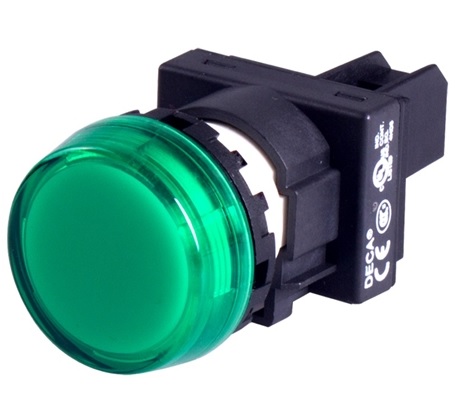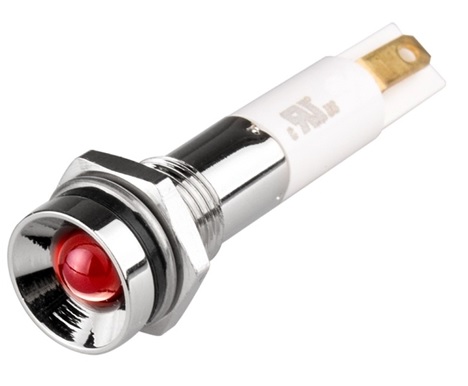Understanding the Different Types of Signal Lights and LED Tower Lights
Think of a bustling factory floor. Machines whir, tools clink, and workers move with practiced efficiency. But how do they stay informed about potential hazards, machine status, or production goals? The answer lies in the practical addition of signal lights, a silent language that keeps everyone on the same page and ensures a safe, productive environment.
This article delves into the world of signal lights, specifically focusing on LED tower lights and how they compare to other common options like beacon lights, pilot lamps, and LED indicators. By understanding the strengths and applications of each, you can make an informed decision about the best industrial or commercial lighting solution for your needs.
What Are Beacon Lights?
Beacon lights are an essential kind of signal light. Unlike tower lights, which offer specific color-coded messages, beacon lights are typically single-colored and emit a flashing or rotating beam. Their primary function is to grab attention and serve as a general warning or alert. Common applications for beacon lights include:
- Traffic control: Signaling to drivers of potential hazards or road closures.
- Construction sites: Warning workers of moving equipment or dangerous areas.
- Emergency vehicles: Increasing visibility and alerting surrounding traffic.
- Safety hazards: Providing a visual alert in areas with potential dangers like falling objects or hazardous materials.
Beacon lights are available in various sizes and intensities, making them suitable for both indoor and outdoor applications. When choosing a beacon light, consider factors like the size of the area needing coverage, the desired level of visibility, and the specific application.
While beacon lights primarily rely on grabbing attention through their flashing or rotating patterns, the color of the light itself also carries meaning. Here's a quick breakdown of common beacon light colors:
- Red: Universal symbol for emergencies requiring immediate attention (law enforcement, fire trucks, hazardous materials).
- Orange: Indicates a situation requiring human intervention (construction vehicles, often paired with other signals).
- Yellow/Amber: Seen on slow-moving vehicles (construction equipment, tow trucks) and hazards (road work zones).
- Green: Associated with safety and security (security personnel, emergency response teams).
- Blue: Used by emergency medical services, law enforcement (meaning can vary by location).
- Purple/Violet: Funeral processions (most jurisdictions) or hazardous scenarios (gas and oil industry).
- Clear/White: General warnings or visibility in low-light conditions (when unsure of the most appropriate color).
Understanding these color codes allows you to interpret beacon light warnings effectively and choose the right color for your needs.
The Function and Use of Pilot Lamps
Pilot lamps are the workhorses of the signal light world. These compact lights offer a simple on/off function, typically in a single color like red, green, or yellow. They are used to indicate basic operational status, such as whether a machine is powered on or off, or if a process is running or complete.
Pilot lamps are often used in conjunction with other signaling devices, providing a clear visual confirmation of system status. For instance, a pilot lamp might be used alongside a running machine to indicate it's operational, while a tower light might be used to display more detailed information about the production process. Their simple design and ease of installation make pilot lamps a cost-effective solution for a variety of applications.
What is the Role of LED Indicators
LED indicators are the smallest and most basic form of signal light. These miniature lights are typically embedded directly into machinery or control panels, providing a visual cue about a specific function or process.
Common applications for LED indicators include:
- Circuit boards: Signifying if a circuit is powered on or off.
- Control panels: Indicating the status of specific buttons or functions.
- Electronic devices: Providing visual feedback on power, connectivity, or error states.
LED indicators are generally not intended to be the sole source of communication. They are best used to supplement other signaling devices or provide quick visual confirmation of system status within a larger electronic context.
LED Tower Lights: The Versatile Powerhouse
Now, let's shine a light on LED tower lights. As the name suggests, these are vertical structures consisting of multiple colored LED lights stacked on top of each other. They can have anywhere from one to five light modules, each capable of displaying a distinct color (red, yellow, green, blue, clear). Some advanced models even offer multiple color options within a single module.
LED tower lights are the clear champions of versatility. Their ability to combine multiple colors and flashing patterns allows them to convey a wide range of information. For instance, a red light might indicate an error state, while yellow could warn of an upcoming maintenance cycle, and green could signal normal operation.
Here are some of the key benefits of LED tower lights:
- Enhanced Visibility: Their height and bright LED lights make them visible from a distance, ensuring everyone in the vicinity receives the message.
- Multicolored Communication: Multiple colors and flashing patterns offer a rich vocabulary of signals, conveying complex information with ease.
- Modular Design: Many models offer modular configurations, allowing you to customize the number of lights and colors based on your specific needs.
- Long-lasting Durability: LED technology is known for its energy efficiency and extended lifespan, minimizing maintenance costs.
Choosing the Right Light for the Job: Applications and Considerations
While LED tower lights offer a compelling array of features, the best signal light solution depends on your specific needs. Let's explore some key factors to consider when making your choice:
- Visibility Requirements: If long-distance visibility is crucial, beacon lights might be the best choice.
- Information Complexity: For conveying simple on/off or status signals, pilot lamps or LED indicators might suffice.
- Need for Detail: LED tower lights shine when you need to communicate a range of messages using color and flashing patterns.
- Space Constraints: If space is limited, consider pilot lamps or strategically placed LED indicators.
We offer a comprehensive selection of signal lights, including LED tower lights (like the PRE series and MT series from Menics), beacon lights, pilot lamps, and LED indicators. We also carry various accessories to ensure proper installation and functionality.
So, don't let communication breakdowns dim your productivity or safety. Invest in the right signal lights for your needs and let the light guide your success. Explore the wide range of options available here at ProductsForAutomation.com and find the perfect solution to illuminate your path to a brighter future.







Comments
Post a Comment